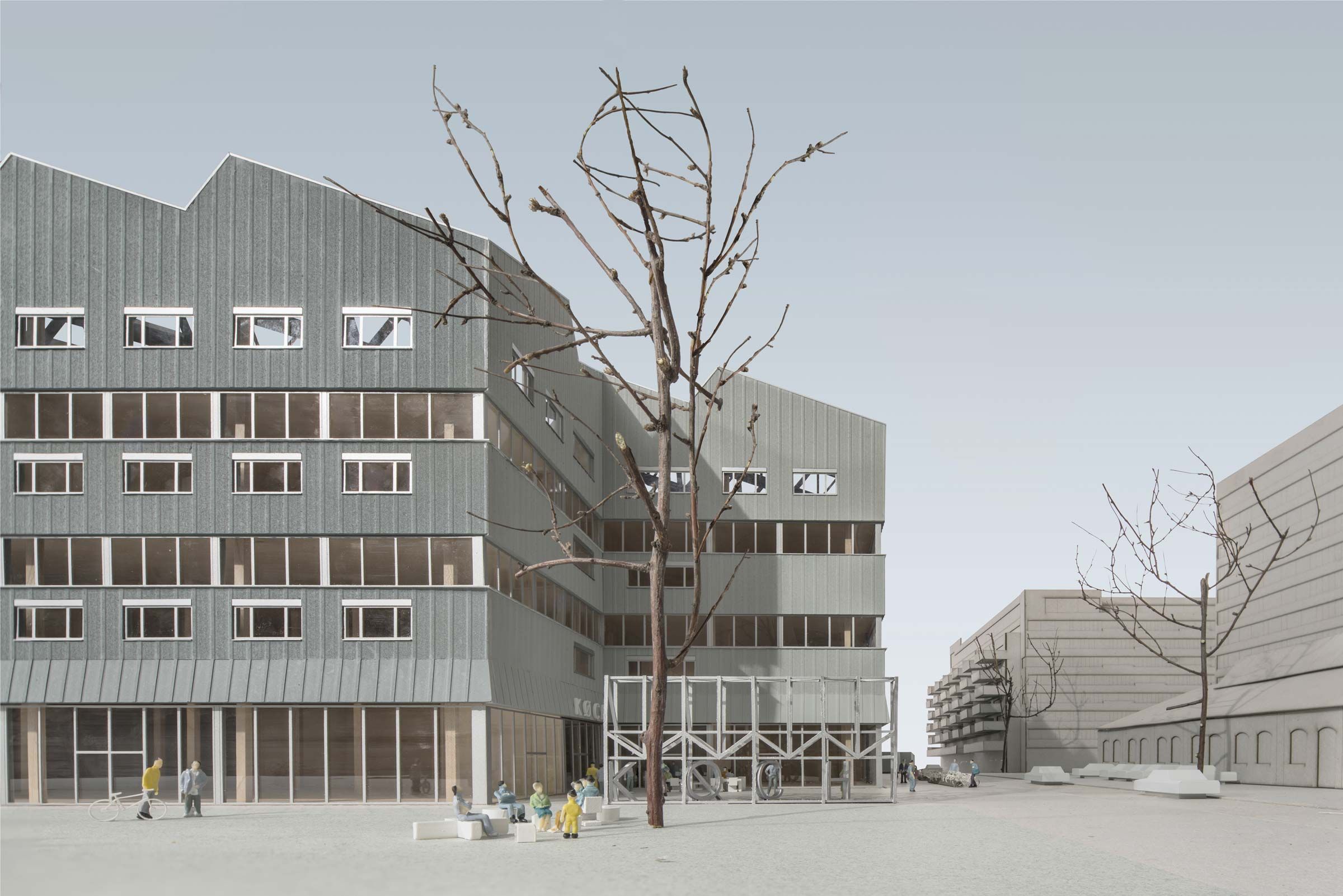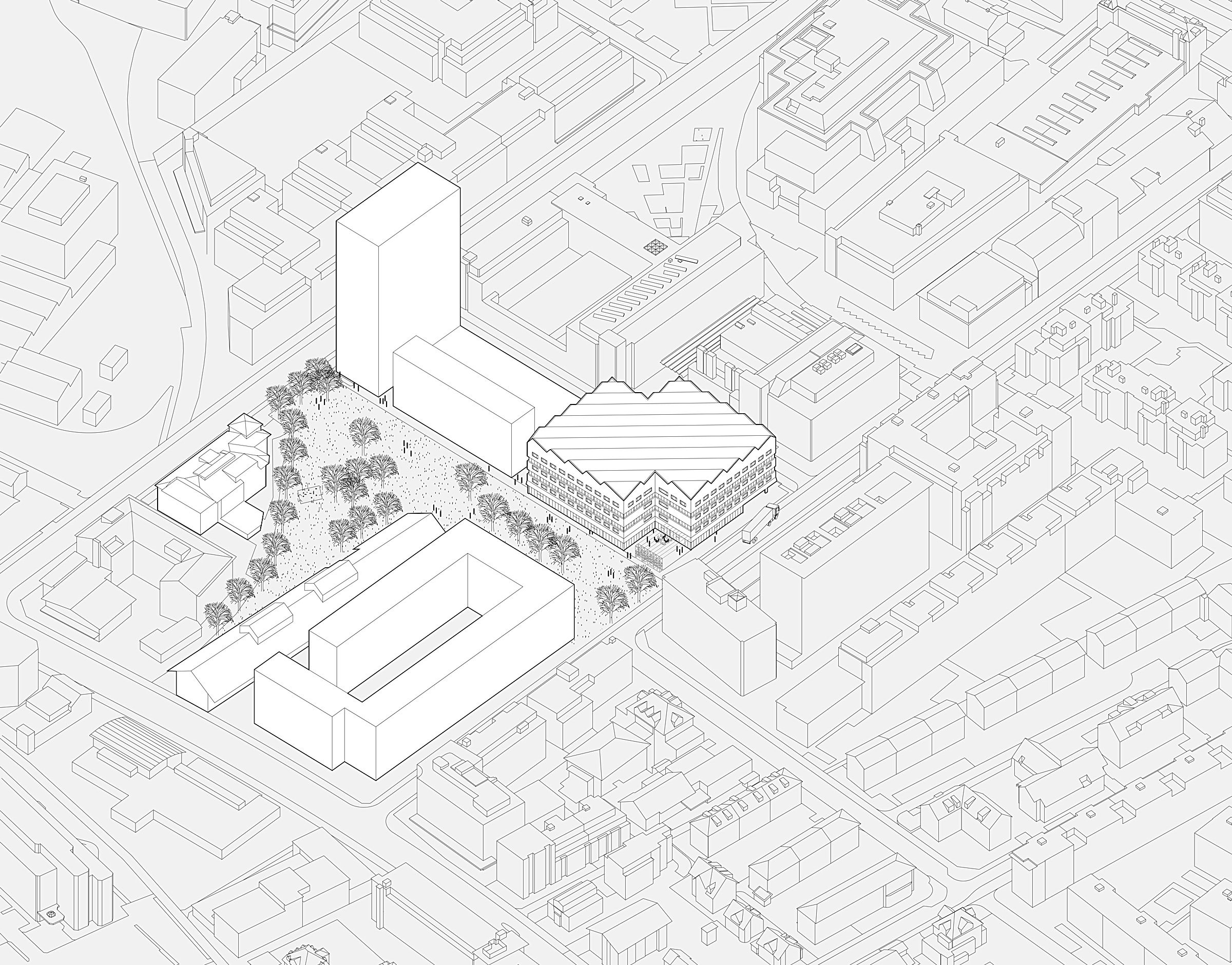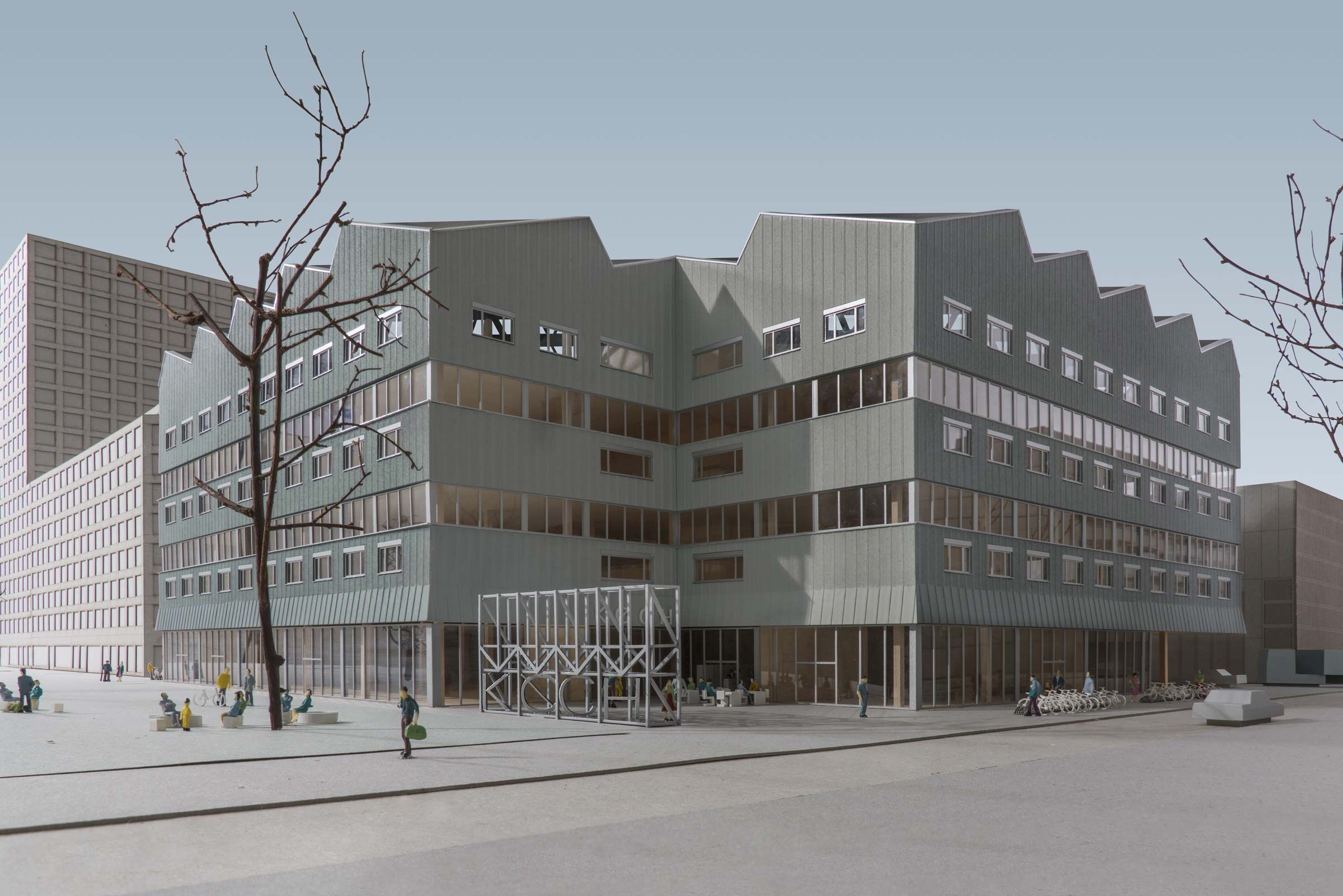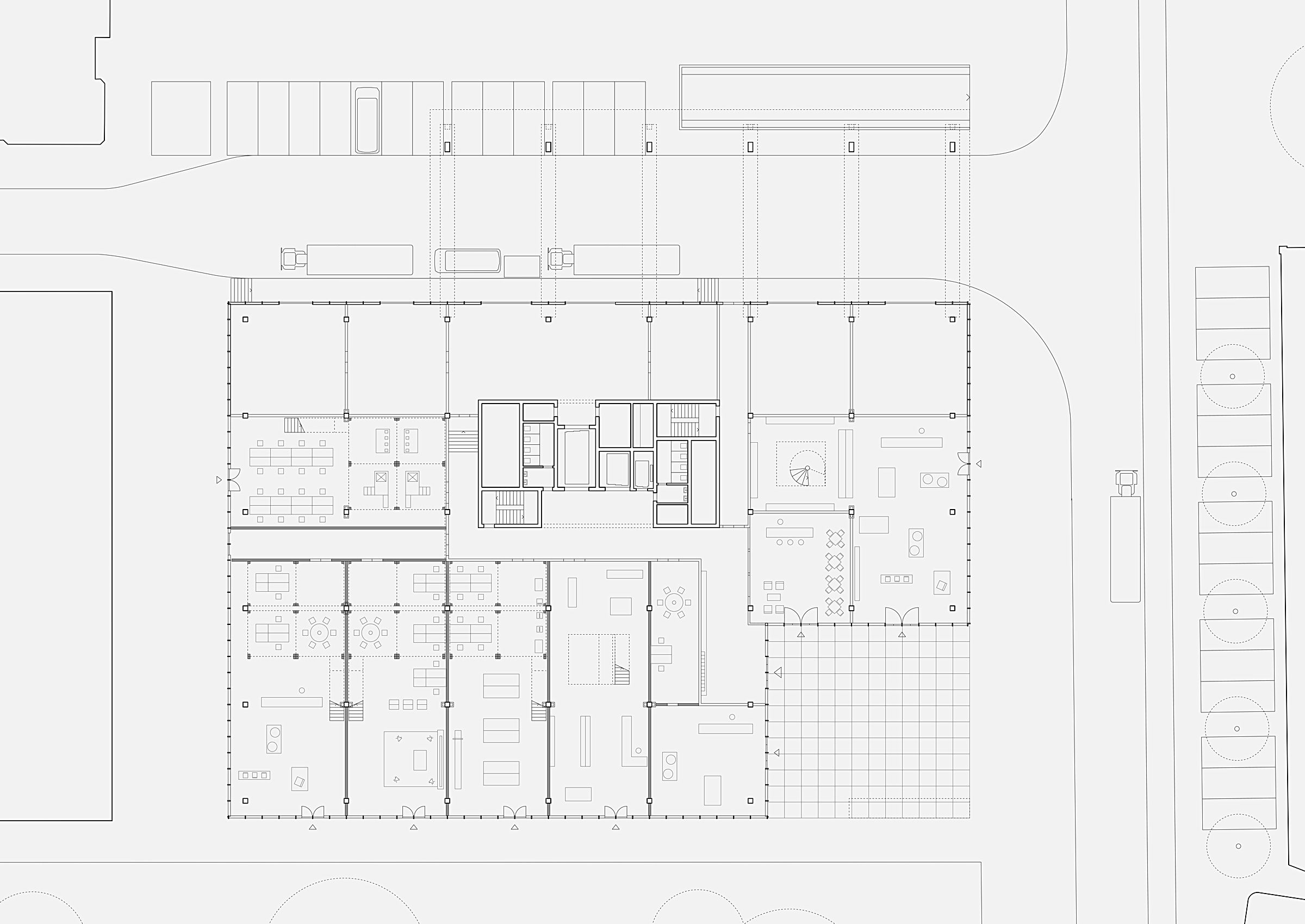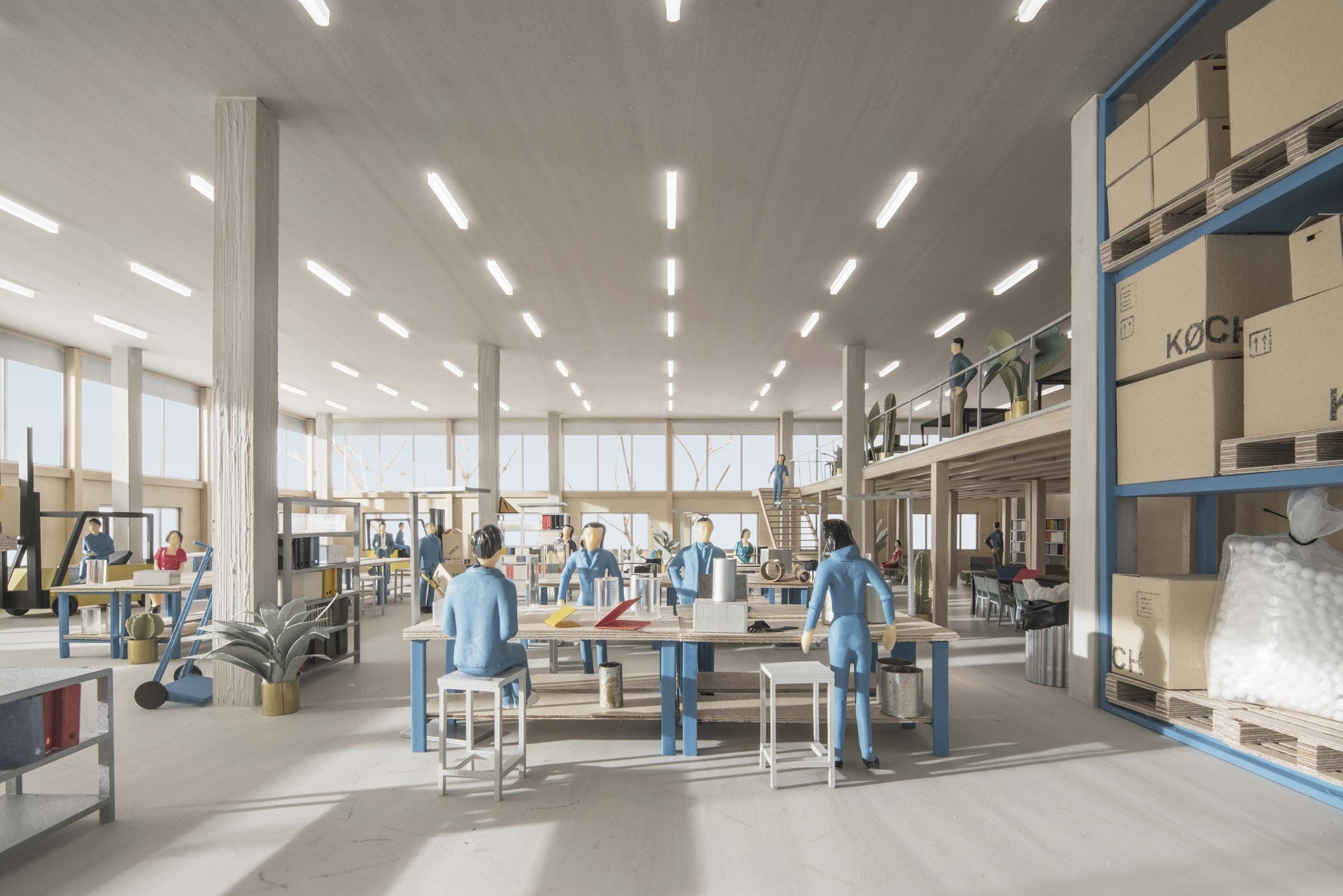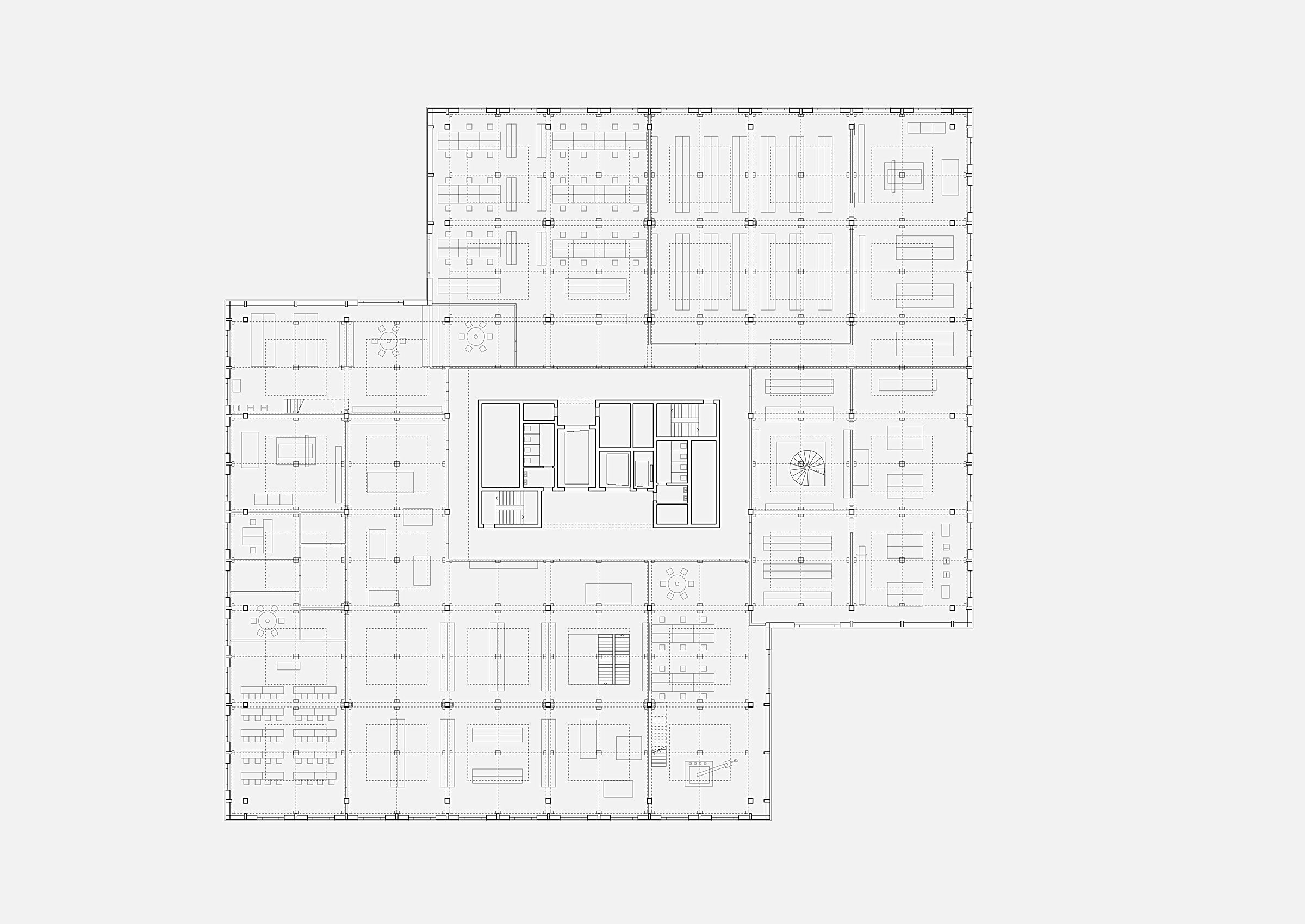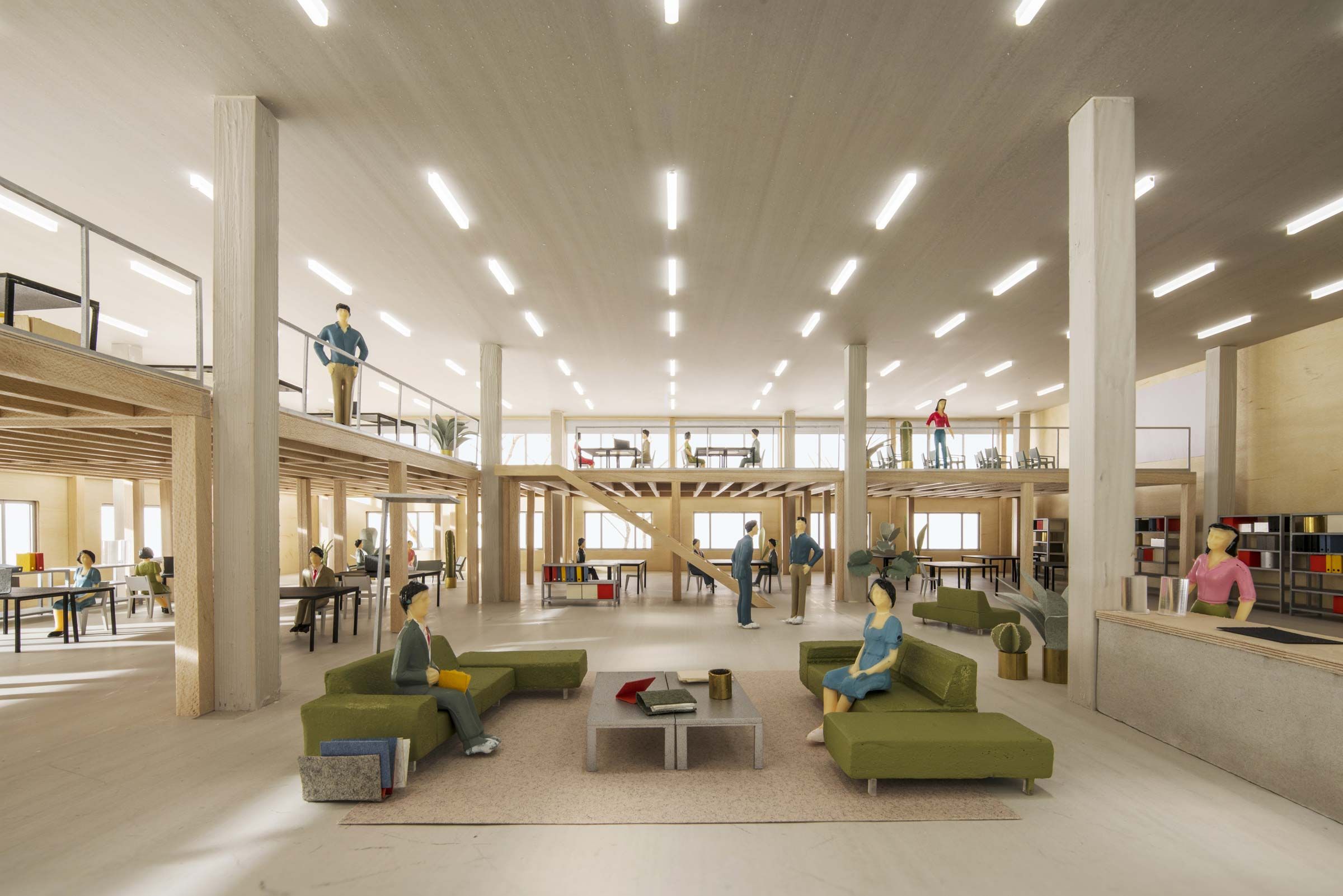2993-EM2-ZRH.CH-2018
Client: Stadt Zürich
Status: Competition (2018)
Clasification: 2 prize
Location: Zürich, Switzerland
Climate: Oceanic / maritime, Temperate
Material: Wood
Environment: Urban
Visualizer: Studio
Scale: 12.000 ㎡ Large
Types: Cultural, Mixed use, Office, Office building
Commercial buildings are interesting commissions. On the one hand this kind of project has a certain simplicity and directness – not to mention banality – about it. On the hand, it is precisely the simplicity that can lead to developing concepts that are all the more radical and architecturally exciting.
In the case of the Koch project the primary requirement was for well-organised commercial spaces, which in fact called for a simple cubic building. To make architecture out of a cube of this kind we propose cutting out two corners of the building. This gives the simple building volume a specific location in the urban plan and allows the mass to be articulated in a compositionally interesting way. By additionally overlaying a tripartite sectional sequence that is formulated in a spatially differentiated way with an open ground floor, two double-height standard floors, and a hall-like space with sawtooth roofs a building is made that has a symbolic quality and establishes a sense of identity. The hybrid facade veils the function behind it and seeks to engage in dialogue with the surrounding residential and commercial buildings.
The rational basic structure with the central circulation core allows the floors to be flexibly subdivided into larger and smaller units. The compact construction method and the efficient circulation and structural concept achieves an excellent ratio of main function area and energy-related floor area to the storey floor areas. Although the floor plans are identical the cross-section and facade figure enable a wide range of spaces with different spatial qualities to be offered. Thanks to potential ‘cluster studios’ several firms can make joint use of common infrastructure areas, large lounges and informal communication zones or meeting rooms. All the potential galleries are served by lifts, the circulation and the core are highly efficiently organised.
The circulation core, floor slabs and columns are made of in situ concrete, the roof and the galleries are designed as prefabricated wooden structures. In conjunction with the exceptionally high spaces and the defined connecting points for internal partition walls and mezzanine ceiling slabs, which can be added later, the concept for the external walls allows maximum flexibility. The facade is made of large, prefabricated, back-ventilated timber frame walls with a plank cladding. The differentiated fenestration addresses a later vertical increase in density in section, using simple means to achieve an architecturally independent expression, both inside and outside. Overlapping welded bitumen sheets with a slate coating are used as weather protection.
The possibility of inserting galleries and in this way increasing the rentable floor area allows the amount of floor space to be optimised according to function and demand. In economic terms this achieves a favourable cost-benefit ratio and facilitates a flexible response to market demands.
